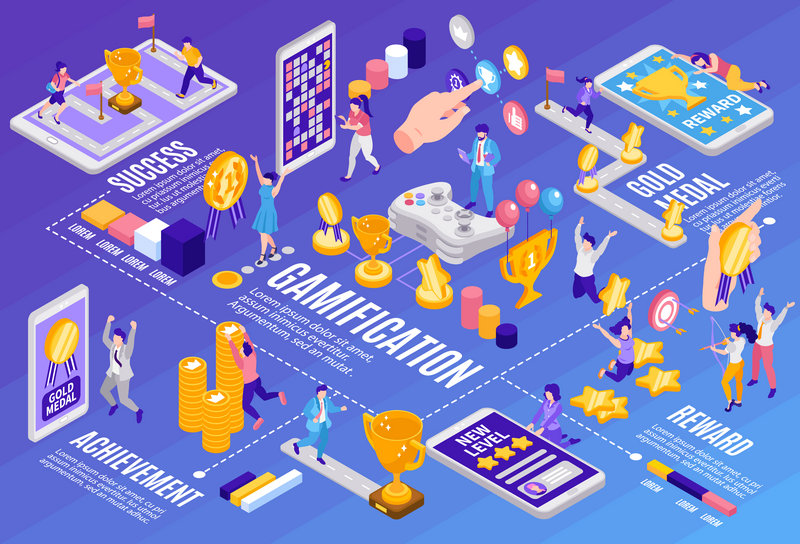In the competitive landscape of mobile gaming, monetization is critical for sustainability—but it must never come at the expense of user experience.
In-app advertising has emerged as a flexible and scalable way to generate revenue, especially for free-to-play (F2P) games. When implemented strategically, ads can enhance user engagement, reward players, and drive long-term loyalty while boosting profits.
In-app ads serve as a bridge between free gameplay and revenue generation, allowing developers to offer content without upfront costs while monetizing through ad impressions. For players, this model often means access to premium features, in-game currency, or exclusive content in exchange for engaging with ads. Key benefits include:
-
Diverse Revenue Streams: Supplement in-app purchases (IAPs) with ad revenue, especially from non-paying users.
-
User Acquisition: Ads can attract new players through cross-promotion or rewarded ad campaigns.
-
Data-Driven Insights: Ad platforms provide granular data on user behavior, enabling targeted monetization strategies.
Choosing the right ad format is crucial for aligning with player expectations and game mechanics:
-
Rewarded Videos
-
How It Works: Players watch a short video (15–30 seconds) to earn in-game rewards like currency, power-ups, or extra lives.
-
Example: A puzzle game might offer “100 gems for watching an ad,” encouraging voluntary engagement.
-
Pros: High user acceptance due to clear value exchange; boosts retention by rewarding active play.
-
Cons: Overuse can lead to fatigue; requires seamless integration with gameplay.
-
Interstitial Ads
-
How It Works: Full-screen ads displayed during natural breaks (e.g., between levels, after deaths).
-
Example: A racing game shows an interstitial ad when a player crashes, followed by an option to “watch to respawn.”
-
Pros: High visibility and engagement; ideal for capturing captive audiences.
-
Cons: Risk of disrupting flow if shown too frequently; must respect pacing (e.g., every 3–5 levels).
-
Banner Ads
-
How It Works: Static or animated banners displayed at the top or bottom of the screen during gameplay.
-
Example: A casual game features a banner promoting a sister app’s sale, visible throughout play.
-
Pros: Low-impact, always-on revenue stream; easy to implement.
-
Cons: Lower engagement compared to video ads; design must avoid blocking gameplay elements.
-
Playable Ads

-
Ad Frequency Capping
- Limit how many ads a user sees within a set time frame (e.g., max 5 ads per hour). Tools like ironSource and AppLovin offer frequency capping to prevent burnout.
-
Impact: Reduces frustration while maintaining steady ad revenue from a larger user base.
-
Contextual Targeting
- Serve ads relevant to the game’s genre, audience, or in-game actions. For example:
- A fitness-themed game shows ads for sports gear or nutrition apps.
- A kids’ game prioritizes family-friendly ads and avoids adult content.
-
Impact: Increases relevance, leading to higher click-through rates (CTR) and lower user churn.
-
Ad Placement Optimization
- Position ads during natural pauses to minimize disruption:
-
Before/After Levels: Interstitials work well here, as players expect a brief break.
-
Rewarded Ad Gates: Offer ads as a choice (e.g., “Watch to skip this level” or “Earn extra coins”).
-
Avoid: Placing ads mid-action (e.g., during a boss fight) or blocking essential UI elements.
-
Hybrid Monetization Models
- Combine ads with IAPs and subscriptions to cater to all user segments:
-
Free Users: Access basic gameplay with ads; offer IAPs to remove ads or unlock premium content.
-
Paying Users: Provide an ad-free experience with exclusive perks (e.g., “VIP pass” with faster progression).
-
Example: A mobile RPG offers free play with rewarded ads, while $4.99 removes ads and grants daily gems.
-
A/B Testing Ad Formats
- Test different ad placements, formats, and rewards to identify what drives the best balance of revenue and retention. For example:
- Compare “10 gems per ad” vs. “a random loot box” to see which generates higher ad completion rates.
-
Tool Tip: Use Firebase Remote Config or Google Ads Experiments to run live tests.
-
Analyze User Segments
- Divide users into groups (e.g., casual vs. hardcore, paying vs. non-paying) to tailor ad strategies:
-
Casual Players: Focus on low-effort rewarded ads (e.g., “watch to continue”).
-
Hardcore Players: Offer high-value ads (e.g., “30-minute XP boost for a 60-second video”).
-
Impact: Increases relevance, leading to higher engagement from each segment.
-
Track Key Metrics
- Monitor these indicators to refine ad strategies:
-
Ad Engagement Rate: % of users who interact with ads (e.g., watch a full video).
-
ARPDAU (Average Revenue Per Daily Active User): Revenue from ads per user, per day.
-
Retention Rate Post-Ad: Ensure ads don’t drive users away after exposure.
Kiloo’s hit game “Subway Surfers” uses a hybrid model of rewarded videos, interstitials, and IAPs:
-
Rewarded Ads: Players can watch videos to earn keys (for revives) or coins (for upgrades), aligning with the game’s fast-paced, retry-heavy mechanics.
-
Interstitials: Shown after 3–5 runs, with a “watch to double earnings” option to incentivize engagement.
-
Result: Ads contribute ~70% of the game’s revenue, with minimal impact on user retention (DAU remains steady at 15M+).
-
Ad Blockers: Encourage non-ad experiences via IAPs (e.g., “Remove ads for $2.99”) or offer exclusive content for paying users.
-
Regulatory Compliance: Ensure ads are age-appropriate (e.g., COPPA for kids’ games) and avoid misleading creatives.
-
Performance Issues: Use lightweight ad SDKs (e.g., Unity Ads, Vungle) to prevent lag or crashes.
In-app advertising is a powerful tool for
game monetization when approached with user experience in mind. By prioritizing relevance, flexibility, and strategic placement, developers can turn ads into a win-win: players gain access to free content and rewards, while studios generate sustainable revenue. The key lies in treating ads as the “currency” of a value exchange, not an interruption—and using data to continuously refine the balance between monetization and engagement. As the mobile gaming market evolves, this approach will remain essential for long-term success.











